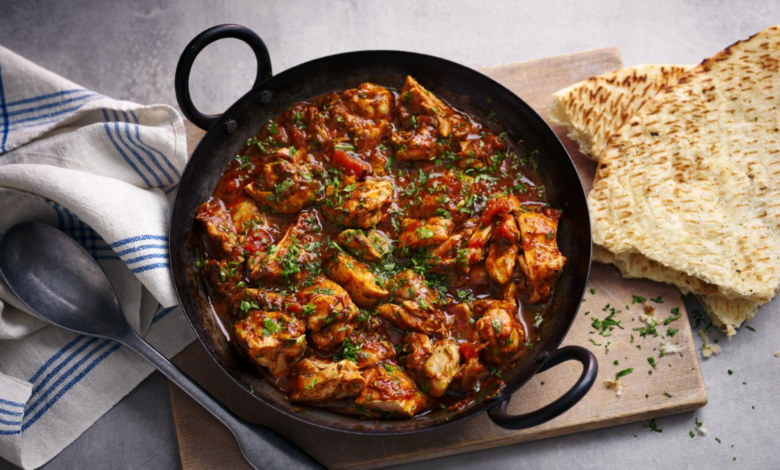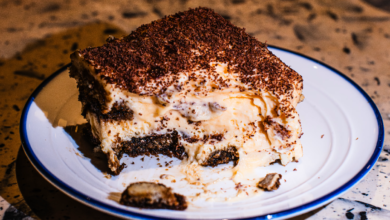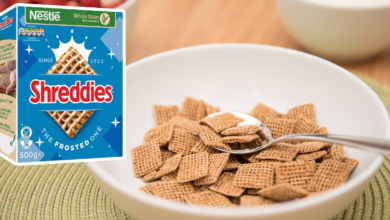Bhuna: The Flavorful Art of Indian Cooking

Discover the rich flavors of Bhuna cooking. Learn its history, techniques, spices, and recipes in this complete guide. Master the art of Bhuna with expert tips and easy-to-follow insights.
Bhuna is not just another word you find on an Indian restaurant menu; it is a unique cooking method that creates deep, robust flavors unlike any other style of curry. When someone orders a bhuna dish, they are not simply choosing a meal, they are experiencing a tradition that has been perfected over centuries.
At its heart, bhuna is about carefully roasting spices and ingredients until their natural oils are released, binding together in a rich and concentrated sauce. Unlike other Indian dishes that rely on large amounts of gravy or broth, bhuna focuses on intensity. The result is a dish that feels both bold and balanced, packed with flavor in every bite.
For anyone passionate about Indian food, understanding bhuna is essential. It is more than a recipe—it is a culinary philosophy that emphasizes patience, technique, and the harmony of spices. In this article, we will explore the origins, techniques, variations, and secrets of bhuna, making you feel like an expert who can appreciate and even recreate this iconic style of cooking at home.
The Origins and Cultural Significance of Bhuna
Bhuna comes from the Hindi word meaning “to roast” or “to fry,” and this definition captures the essence of the cooking method. The tradition has its roots in northern India and Bangladesh, regions known for bold, spice-driven cuisines. Historically, bhuna was developed as a way to maximize the flavor of limited ingredients, particularly in rural households where every spice counted.
Over time, bhuna became a staple of both everyday cooking and festive meals. Families passed down their techniques through generations, each adding their own subtle variations. Some households leaned toward more chilies, while others emphasized earthy spices like cumin or fenugreek. Yet the philosophy remained the same: roast the spices until their essence is fully expressed, then allow the main ingredient—be it chicken, lamb, or vegetables—to soak in those flavors.
Culturally, bhuna represents more than just food. It embodies hospitality, warmth, and the idea that slow cooking is a form of love. Sharing a bhuna dish is an intimate gesture, whether at a family dinner or a grand celebration. Even today, in modern cities across the world, ordering bhuna in a restaurant connects people to centuries-old culinary traditions.
What Makes Bhuna Unique
Bhuna differs from other Indian cooking methods because of its technique. While many curries rely on a base of tomatoes or yogurt to create gravy, bhuna uses minimal liquid. Instead, the ingredients are roasted until they cling together, forming a thick, flavorful coating. This not only concentrates the taste but also enhances the texture, giving each bite a powerful punch of spices.
Another defining aspect is the use of fresh spices. Pre-ground spices have their place, but in authentic bhuna cooking, whole spices are toasted and ground just before use. This freshness elevates the dish from good to unforgettable. The fragrance that fills the kitchen while preparing a bhuna dish is almost as satisfying as the meal itself.
Furthermore, bhuna invites creativity. While there are traditional recipes for chicken bhuna or lamb bhuna, the method can be applied to almost any ingredient. From prawns to paneer, each variation tells a different story, yet the common thread is the slow roasting of spices and the development of deep, complex flavors.
Essential Ingredients in Bhuna
When making bhuna, certain ingredients are non-negotiable. Each plays a critical role in shaping the signature flavor profile.
- Onions: Often used as the base, onions provide sweetness and texture. They are fried until golden, which adds depth and color to the dish.
- Garlic and Ginger: These are the backbone of many Indian dishes, but in bhuna they shine even brighter, giving the dish its sharp, aromatic kick.
- Tomatoes: Used sparingly, tomatoes add a touch of acidity that balances the richness of the roasted spices.
- Spices: The most common are cumin, coriander, turmeric, chili powder, and garam masala. Each is carefully roasted to release maximum flavor.
- Protein or Vegetables: Chicken, lamb, beef, fish, paneer, and vegetables like aubergine or cauliflower work beautifully with the bhuna technique.
The beauty of bhuna lies in the way these ingredients transform when cooked together. The onions caramelize, the spices darken and deepen, and the protein absorbs every bit of the concentrated flavor.
The Technique of Bhuna Cooking
The method of cooking a bhuna dish is simple in theory but requires practice to perfect. The process begins with heating oil or ghee in a heavy-bottomed pan. Onions are added and slowly browned, followed by garlic, ginger, and spices. The key here is patience; rushing through this stage can leave the spices raw and overpowering.
Once the spices have been properly roasted, the protein or vegetables are added and coated thoroughly. Small amounts of liquid, often just water or stock, are drizzled in to prevent burning. Unlike a curry, which simmers in a pool of sauce, bhuna stays relatively dry, with the liquid evaporating to leave a thick, clinging masala.
Timing is critical. Stirring continuously prevents sticking and ensures even cooking. The end result should not be overly saucy but instead glossy, aromatic, and rich, with the spices fully integrated into the dish.
Bhuna in Modern Kitchens
While bhuna is deeply traditional, it has found new life in contemporary kitchens. Chefs around the world have experimented with the method, applying it to global ingredients. For example, bhuna prawns are now popular in coastal restaurants, while vegetarian bhuna with tofu or mushrooms has become a favorite in plant-based cooking circles.
The technique also appeals to home cooks who want a flavorful dish without needing extensive equipment. A single pan, fresh spices, and time are all that is required. The adaptability of bhuna means it works equally well for a quick weekday dinner or a centerpiece dish for special occasions.
Bhuna’s presence on restaurant menus abroad is a testament to its enduring appeal. It offers something different from the typical curry—something more concentrated, more intense, and deeply satisfying.
Comparing Bhuna with Other Indian Dishes
| Dish Style | Cooking Method | Sauce Consistency | Flavor Profile |
|---|---|---|---|
| Bhuna | Roasting with minimal liquid | Thick and clinging | Deep, concentrated, robust |
| Curry | Simmering with gravy or stock | Saucy and smooth | Mild to spicy, more balanced |
| Tandoori | Marinated and baked or grilled | Dry | Smoky, charred, aromatic |
| Korma | Cooked with cream or yogurt | Rich and creamy | Mild, nutty, subtly spiced |
“Bhuna is not just cooked food—it is the story of spices, fire, and time woven together into flavor.”
This table highlights why bhuna stands out. It is not as saucy as curry, not as smoky as tandoori, and not as mild as korma. Instead, it occupies a unique space, giving diners a concentrated experience of Indian spices.
Variations of Bhuna

There are countless variations of bhuna, each reflecting the diversity of Indian cuisine.
Chicken Bhuna: Perhaps the most well-known version, chicken bhuna balances tender meat with spicy, roasted masala. It is a favorite in both restaurants and homes because it combines familiarity with bold flavors.
Lamb Bhuna: Known for its richness, lamb bhuna is a celebratory dish. The meat absorbs the spices beautifully, creating a hearty, filling meal often paired with naan or roti.
Vegetable Bhuna: Perfect for vegetarians, this version uses cauliflower, potatoes, or aubergine. The roasting technique enhances the natural sweetness of the vegetables while coating them in spice.
Seafood Bhuna: Prawns or fish work surprisingly well with bhuna. The quick cooking time of seafood matches the intensity of the spices without overpowering the delicate flavors.
Each variation demonstrates how versatile the technique can be. No matter the main ingredient, the soul of bhuna remains the same—slow roasting, concentrated flavor, and aromatic richness.
Tips for Cooking the Perfect Bhuna
Cooking a successful bhuna dish requires a mix of patience and technique. Here are expert tips:
- Use fresh spices: Grinding spices right before cooking releases oils that pre-ground spices lose over time.
- Control the heat: Medium heat is best. Too high and the spices burn, too low and they do not release their full aroma.
- Add liquid sparingly: Only add water or stock in small amounts to prevent burning. Too much liquid will turn it into a curry.
- Stir frequently: Bhuna requires attention. Continuous stirring ensures even cooking and prevents sticking.
- Finish with garnish: Fresh coriander or a squeeze of lemon can brighten the heavy, roasted flavors.
Frequently Asked Questions about Bhuna
What does bhuna mean?
Bhuna means “to roast” or “to fry” in Hindi, referring to the cooking technique of roasting spices and ingredients until their oils are released.
Is bhuna very spicy?
Not necessarily. While bhuna is intense in flavor, the level of spice can be adjusted to taste. It can be mild, medium, or fiery hot depending on the cook’s preference.
What is the difference between bhuna and curry?
Bhuna is thicker and drier, with the spices clinging to the meat or vegetables, while curry is saucier with more liquid.
Can bhuna be vegetarian?
Absolutely. Vegetable bhuna is very popular, using cauliflower, potatoes, or paneer as the main ingredient.
Is bhuna healthy?
Yes, especially when prepared with lean proteins and minimal oil. The use of fresh spices also provides antioxidants and other health benefits.
Conclusion
Bhuna is more than just an Indian dish—it is a philosophy of cooking that highlights patience, precision, and the artistry of spices. Its uniqueness lies in its roasting technique, which creates concentrated, bold flavors unlike any other dish. Whether you try chicken bhuna, lamb bhuna, or a vegetarian version, the essence remains the same: an unforgettable culinary experience that connects you to centuries of tradition.
For anyone who loves Indian cuisine, learning the art of bhuna is an essential step. With fresh ingredients, the right technique, and a bit of patience, you can bring this timeless dish to life in your own kitchen.





